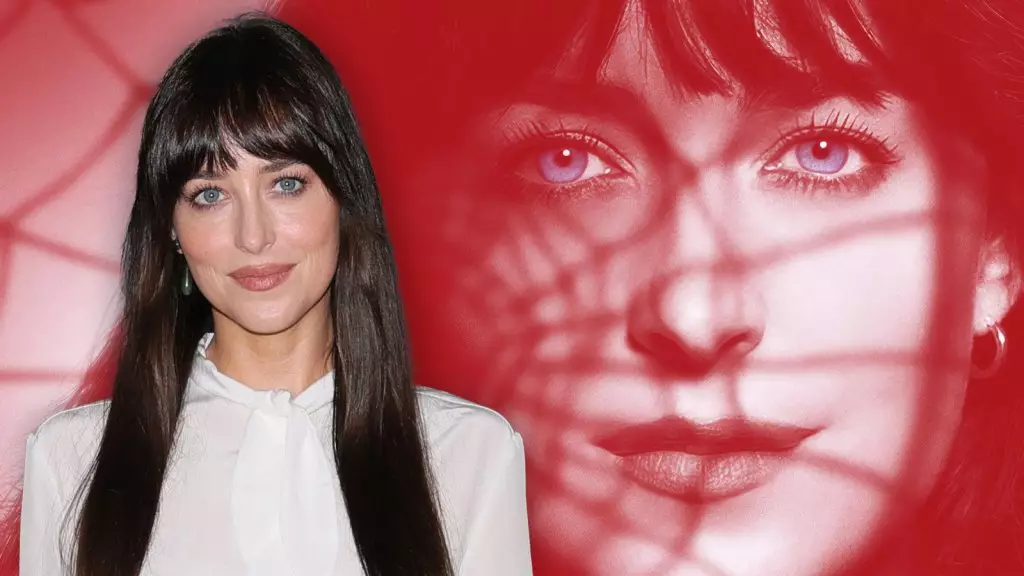In recent years, the superhero genre has dominated the box office, seemingly without end. Yet, as Dakota Johnson’s experience in “Madame Web” illustrates, there lies a complex undercurrent of fatigue among audiences and creators alike. The film, once anticipated as another jewel in the sprawling Marvel crown, ultimately floundered at the box office with a mere $51.5M return against a steep $80M budget. This significant financial disappointment has ignited debates about the creative processes underpinning these superhero projects, spurring actors and directors to grapple with the evolving demands of the cinematic landscape.
Johnson’s candid remarks regarding the film’s shortcomings resonate deeply within the industry. She attributes its failure to “people who don’t have a creative bone in their body,” suggesting that corporate intervention and committee-driven decision-making are stifling true artistic expression. In her interviews, she articulates a growing frustration that resonates with many in the artistic community. This signals a potential turning point in filmmaking, especially in a genre that seems excessively reliant on safe blockbusters rather than encouraging innovative storytelling.
The Art of Collaboration Versus Corporate Control
A film’s destiny often rests in the hands of a collective rather than a singular visionary. Johnson’s assertion that “creative decisions are made by committee” brings forth the question: are studios sacrificing artistic integrity for box office safety? This is not just a critique of “Madame Web”; rather, it reflects a broader trend where studios favor repetitive formulas over allowing unique narratives to unfold. As filmmakers stretch their creative boundaries, the corporatization of cinema can dampen originality, leading to products that feel mechanical rather than inspired.
For many creators, this struggle is all too real. The industry’s top decision-makers are tending to prioritize market viability over visionary filmmaking. The result? Films that metamorphose during production, often losing their original essence. Johnson adeptly captures this frustration: she describes how things can start strong only to devolve into something unrecognizable. The question that lingers is whether the Hollywood machine can pivot back to prioritizing artists’ visions or if it will continue its trend into predictable mediocrity.
Lessons Learned and Moving Forward
Despite the disappointing reception of “Madame Web,” Johnson’s reflections reveal a silver lining to her experiences. She notes that every setback can serve as a learning opportunity—in this case, the realization that she might not belong in the superhero world after all. Understanding one’s place and limitations in the grand tapestry of cinema is a powerful insight. It is vital for artists to acknowledge where they thrive, which allows for more authentic performances and projects that resonate deeply with them.
Moreover, Johnson’s journey serves as a cautionary tale about brand alignment. Not every actor is destined to don a cape or wield superpowers, and the distinction between typecasting and genuine interest is crucial for long-term satisfaction in one’s career. It prompts a reflective dialogue among actors, encouraging them to seek roles that resonate with their intrinsic identity rather than succumbing to the alluring promise of blockbuster fame.
The Role of Public Perception and Future Prospects
Public perception can wield extraordinary power over a film’s fate, and as Sony Pictures CEO Tony Vinciquerra notes, the press played a significant role in “Madame Web’s” disappointing performance. When critical reception sways audience perceptions before they even see a film, it raises the stakes considerably. Vinciquerra’s comments point to a growing rift between critical reception and audience enjoyment. “Madame Web” may have faltered publicly, but it found success on Netflix, indicating a stark dichotomy between critical narrative and viewer engagement.
This situation puts additional pressure on studios and filmmakers to ensure that marketing strategies not only elevate the film’s story but also align with the narratives audiences are eager to embrace. An evolving media landscape demands filmmakers to explore uncharted territories rather than clinging to formulaic plots and structures. As Dakota Johnson moves forward, her remarks underscore the importance of fostering creative partnerships that prioritize narrative integrity over box office numbers.
Ultimately, the intersection of commercial filmmaking and artistic vision is fraught with challenges. Johnson’s experience in “Madame Web” encapsulates a broader struggle: how can filmmakers assert their creative voices amid overwhelming corporate structures that often prioritize profit over art? The answer may lie in reimagining the dynamics of creative collaboration, allowing for genuine artistry to shine through even in the glitzy world of superheroes.
